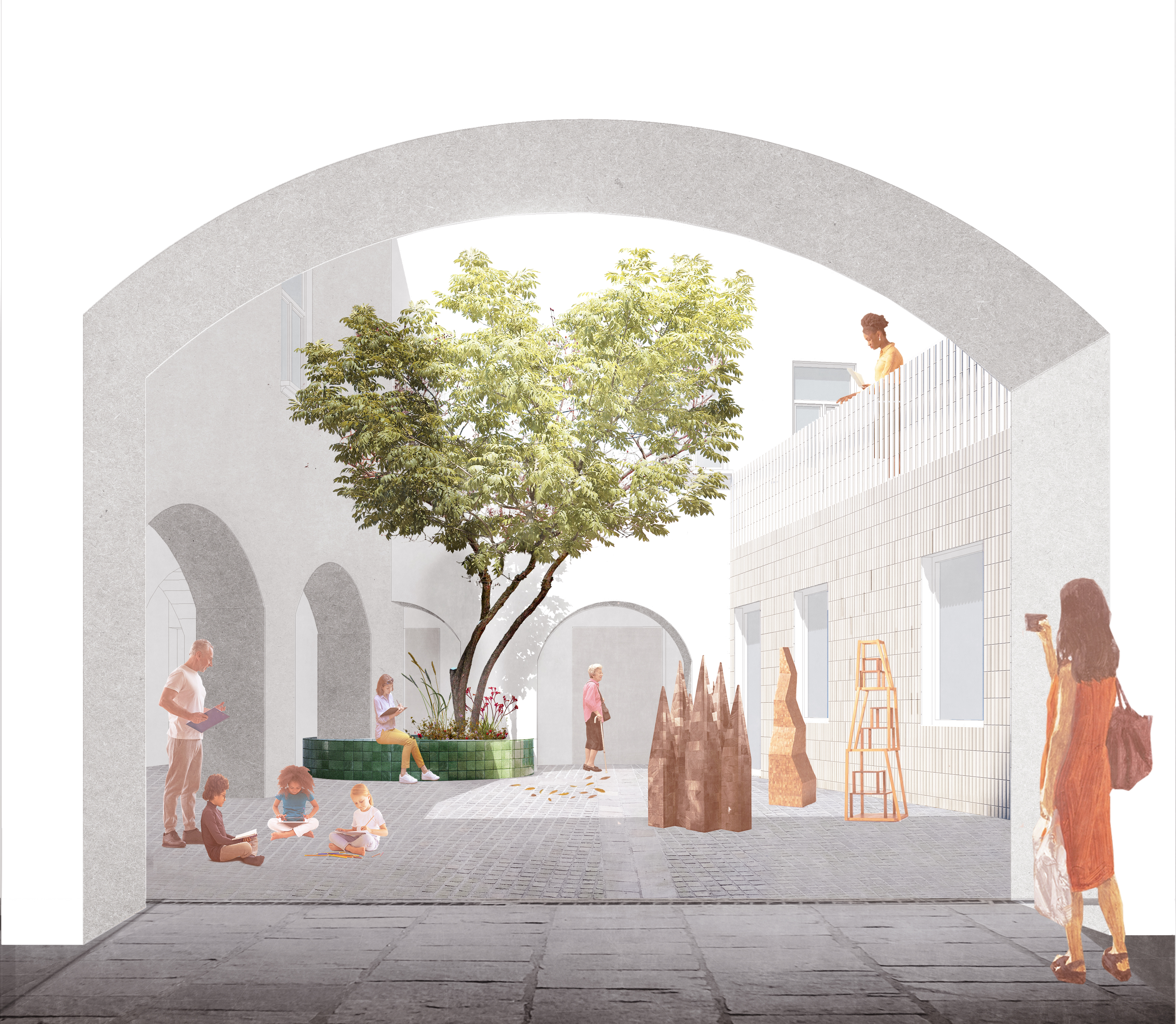Open competition
Spazi per l’informazione e l’accoglienza turistica
Borgo D’Anaunia, Tn
2022
With Michele Mario Zanuso
Images: mmZ
The light that irradiates the plateaus of the Val di Non, in a succession of fields and apple orchards, at times disappearsin very deep canyons, such as the Rio Sass, richof unique clay, the raw material for theprocessing, firing and the creation ofceramics of great beauty, a constant presence inmany palaces, castles, santauri and housesin Trentino Alto Adige. The olla stove was born over 500 years ago in the kilnsof the ceramists of Sfruz, a few kilometres from BorgoD'Anaunia, when people began making stoves withoverlapping bodies, rectangular, octagonal, round,in the colours of green, white with blue decorationsand more rarely in sienna and brown. These small domestic architectures became thethe warm and welcoming centrepiece of the rooms andhallways of mountain interiors, plastic elementsvery recognisable not only for the people of Nono, but foranyone entering an Alpine interior. The seat of the municipality of Borgo d'Anaunia, palazzoStefenelli, from the end of the 19th century, must have hadat least a couple of coloured tiled stoves,before the heating system wasmodernised.

In the design proposal,the reference to the geometry of olla stoves is clear and direct:new sculptural volumes occupy the spaces of the ground floor, flank the existing structure, graze pillars and columns, cover peeling walls and mark out thedemolition.The majolica, a two-dimensional element, glossy wall covering(in the outer wall of the family point overlooking the courtyard), becomes volume and three-dimensional object (in the seats, counters and on thresholds and upholstery).Colour plastically unites the rooms and functions as a visual connection between the interior spaces, from the façade to the seat with the apple tree in the courtyard, while themodularity of the tile meets the diverse functional needs of the many organisations, associations and institutions involved.The light of the plateau glides faston the coloured ceramics set into the plaster facades of the municipality, attracting the eye of passers-by and invitingto enter.An understated aesthetic, easymaintenance, resistance to atmospheric agentsatmospheric agents, as well as a low initial outlay, guarantee the majolica tiles great durability.







